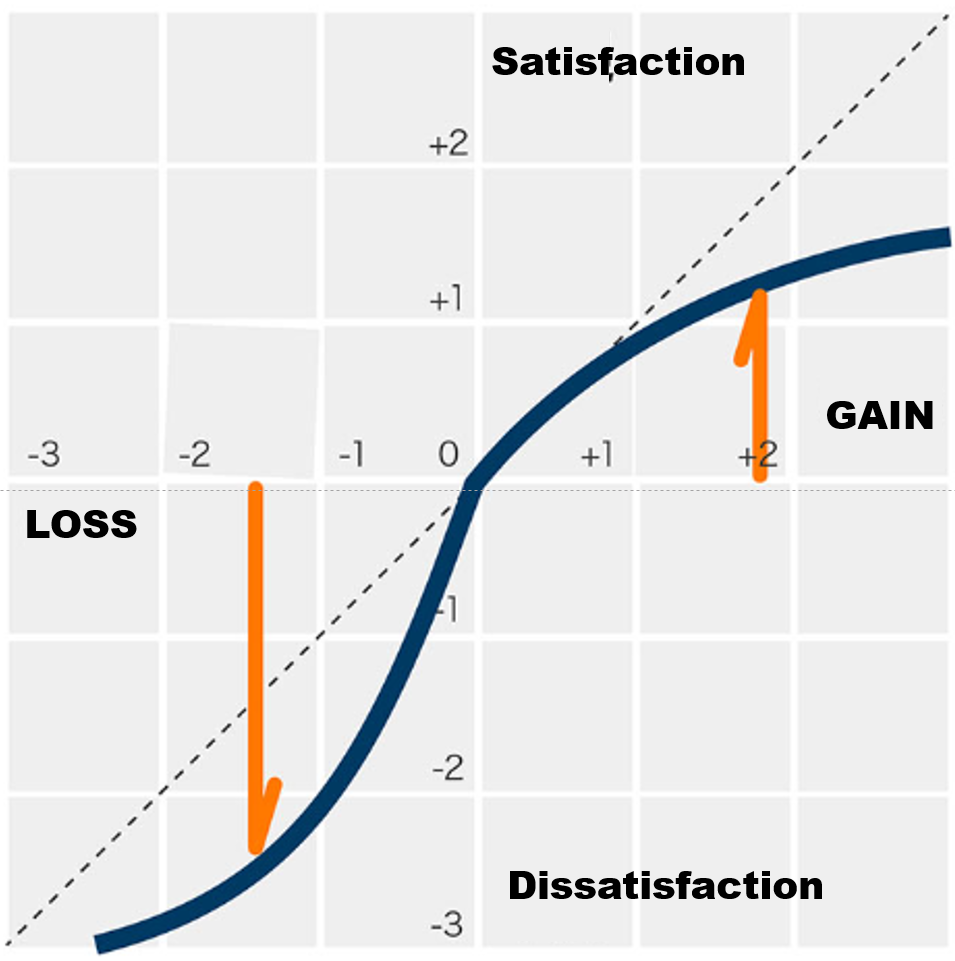What is prospect theory? Prospect theory is a behavioral economics theory that can be used from a marketing perspective. Guiding customers through the framing effect is also effective in the subscription model, of which we have seen many examples recently. Let’s take a look at prospect theory and the framing effect.
Contents
What is Prospect Theory
Prospect theory is one of the leading theories in behavioral economics, which states that “a person’s decision-making depends on the degree of loss in front of him”. It was presented by Daniel Kahneman and others and won the Nobel Prize in Economics.
Classical economics has been argued on the assumption of rational human beings, but in reality, our decisions are not always rational. We will often make irrational choices due to emotional, sensory, and other biases. A good example is buying a lottery ticket even though the odds of winning are extremely low.
Behavioral economics is a discipline that attempts to explain human behavior realistically by incorporating psychological concepts. Therefore, it is a useful concept for actual business activities.

Profit and loss impact is not the same.
The point of prospect theory is that humans feel the disappointment of a loss more strongly than the pleasure of a gain and that many decisions are made with a loss-averse emotional bias.
It is often said that when you are losing money in investment or gambling, you will take big risks to recoup your losses, and this behavior can be exactly explained by prospect theory.
Prospect Theory, Incorporating the Framing Effect into Marketing Activities
Prospect theory can be applied to actual corporate activities in a variety of ways, but one representative example is the framing effect, which is applied to information communication. That is, the impression of the receiver can vary greatly depending on the expression even if the contents are the same.
For example, if you say “a surgery that fails 5 out of 100 people” and “a surgery with a 95% success rate,” many people will choose the latter, even though they have the same outcomes. By devising the way you communicate, you can create favorable customer behavior for your company.

Another technique is to make good use of a reference price, which is a price that customers feel is reasonable for a product or service. This is to make the customer feel that the price will eventually be raised and that they will lose money if they do not buy now.
People are more vulnerable to being told that they will suffer a loss than to being told that they will get a good deal. This is called “fear appeal,” and it also applies to sales methods with limited quantities or periods.
Another approach is to take away the customer’s fear of making a mistake. A money-back guarantee, for example, fits into this category. This method is often used in e-commerce, where customers cannot check the product because it gives them a sense of security.
The framing effect is often used in the subscription model (monthly billing model), which is a new business model these days. Measures that take into account customer psychology are successfully incorporated, such as being used on the screen for selecting a price plan to purchase, or allowing immediate cancellation if the plan is not used very often.

